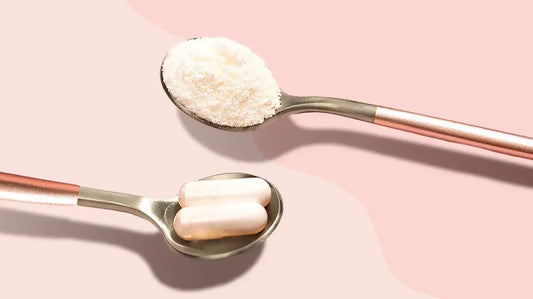In recent years, the quest for longevity and optimal health has led many individuals to explore various supplements and compounds. Among these, NAD (Nicotinamide Adenine Dinucleotide) and NMN (Nicotinamide Mononucleotide) have gained significant attention. As people become more aware of the potential benefits of these molecules, questions arise about their similarities and differences. This article delves into the relationship between NAD and NMN, addressing the key question: are they the same?
Is NAD and NMN the same?
No, NAD and NMN are not the same, although they are closely related. NAD is a coenzyme found in all living cells, playing a crucial role in metabolism and energy production. NMN, on the other hand, is a nucleotide derived from ribose and nicotinamide, which serves as a precursor to NAD. This means that NMN is converted into NAD within the body, but they are distinct compounds with different functions.
To understand the relationship between NAD and NMN, it’s essential to explore their roles in cellular processes. NAD is vital for various biological functions, including redox reactions, which help convert food into energy. Additionally, NAD is involved in DNA repair, cell signaling, and regulating circadian rhythms. As we age, NAD levels naturally decline, which is linked to various age-related health issues.
What is NAD?
NAD, or Nicotinamide Adenine Dinucleotide, is a coenzyme that exists in two forms: NAD+ (oxidized) and NADH (reduced). It plays a fundamental role in cellular metabolism by facilitating redox reactions, which are essential for converting nutrients into energy. NAD+ acts as an electron carrier, accepting electrons during metabolic processes and helping generate adenosine triphosphate (ATP), the primary energy currency of cells.
Beyond its role in energy metabolism, NAD is also crucial for several other functions:
- DNA Repair: NAD is involved in the activation of enzymes called sirtuins, which play a significant role in DNA repair and maintenance.
- Cell Signaling: NAD participates in signaling pathways that regulate various cellular processes, including inflammation and stress response.
- Gene Expression: NAD influences gene expression by affecting the activity of histone deacetylases, impacting how genes are turned on or off.
What is NMN?
Nicotinamide Mononucleotide (NMN) is a nucleotide that serves as a direct precursor to NAD. It is composed of a ribose sugar, nicotinamide, and a phosphate group. NMN is naturally found in various foods, such as broccoli, cabbage, avocado, and tomato, although in relatively small amounts. The body can convert NMN into NAD through a series of enzymatic reactions.
Recent research has highlighted NMN's potential benefits, particularly in the context of aging and metabolic health. Supplementation with NMN has been studied for its ability to:
- Boost NAD Levels: By providing the body with NMN, individuals may increase their NAD levels, potentially counteracting age-related declines.
- Enhance Energy Metabolism: Higher NAD levels can lead to improved energy production, which may enhance physical performance and endurance.
- Support Healthy Aging: Some studies suggest that NMN supplementation may improve insulin sensitivity, promote cardiovascular health, and enhance cognitive function.
How do NAD and NMN work together?
The relationship between NAD and NMN is a vital aspect of cellular energy metabolism. When NMN is ingested, it is rapidly converted into NAD through the action of specific enzymes. This conversion highlights NMN's role as a crucial building block for maintaining adequate NAD levels in the body.
As NAD levels increase, the benefits associated with this coenzyme can also be observed. These benefits include enhanced energy production, improved DNA repair mechanisms, and better overall cellular health. Therefore, while NAD and NMN are not the same, NMN serves as an essential precursor that supports and maintains the body's NAD levels.
Can you take NAD and NMN together?
While NAD supplementation is available, it is often more effective to supplement with NMN to boost NAD levels. This is primarily because NAD is not easily absorbed when taken orally. Instead, NMN can be efficiently absorbed and converted to NAD within the body. Some individuals choose to take both NAD and NMN, but it is generally more beneficial to focus on NMN supplementation for enhancing NAD levels.
Conclusion
In summary, NAD and NMN are related but distinct compounds. NAD is a vital coenzyme that plays a critical role in cellular metabolism and energy production, while NMN is a precursor that the body converts into NAD. Understanding their differences and how they work together provides insight into their roles in health and aging. As research continues to evolve, NMN supplementation may prove to be a promising strategy for enhancing NAD levels, supporting energy metabolism, and promoting overall health as we age.
For those interested in optimizing their health and longevity, exploring the benefits of NMN and its relationship with NAD could be a valuable addition to their wellness regimen. As always, it is advisable to consult with a healthcare professional before starting any new supplement to ensure it aligns with individual health needs and goals.
Stay Sharp, Stay Energized, Stay Ahead
Aging doesn’t have to slow you down. NMN + Resveratrol is your key to sustained energy, sharper focus, and long-term vitality. Whether you're a high performer pushing boundaries, a biohacker optimizing every aspect of life, or a parent looking to keep up with the demands of daily life, this powerful combination fuels your body at the cellular level.
Backed by science and trusted by those who refuse to settle for average aging, NMN + Resveratrol helps you stay ahead—today, tomorrow, and for years to come.
Experience the benefits for yourself. Start your journey to better aging now!
Try NMN + Resveratrol Today!
NMN + RESVERATROL
Cellular NAD+ booster with ultra‑pure NMN and Resveratrol, at research‑backed doses.*
Read more:


